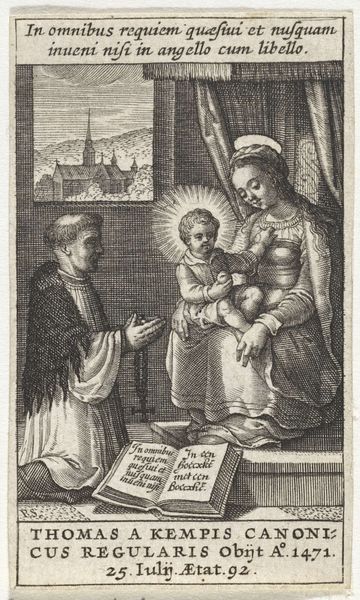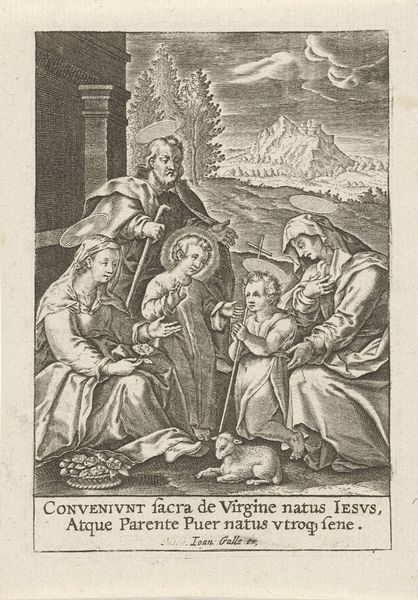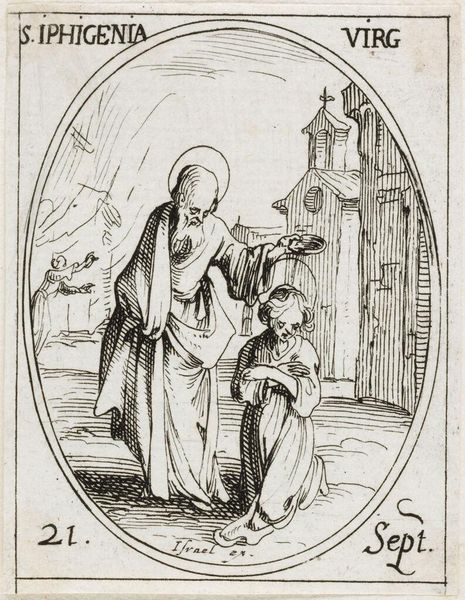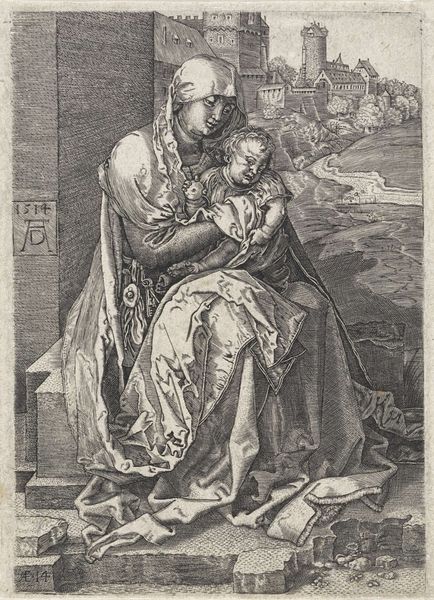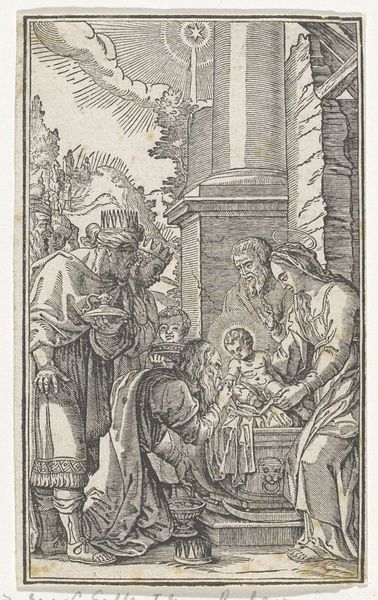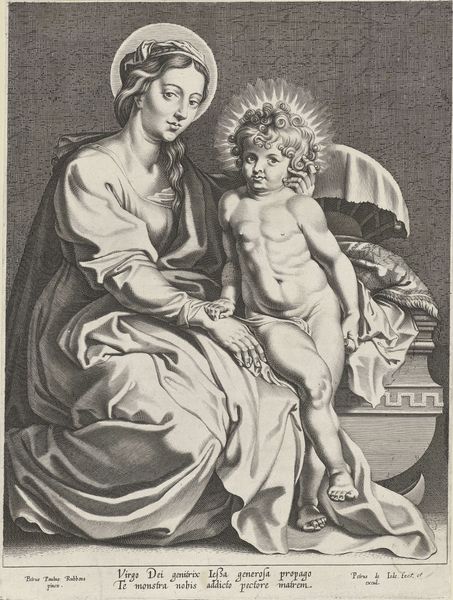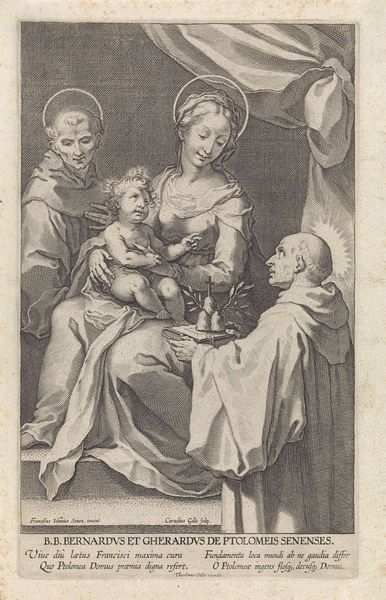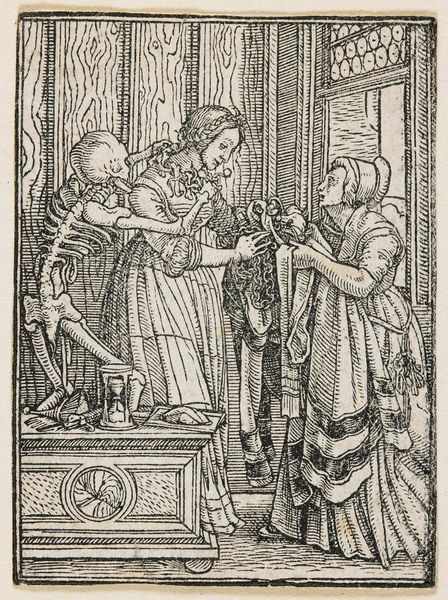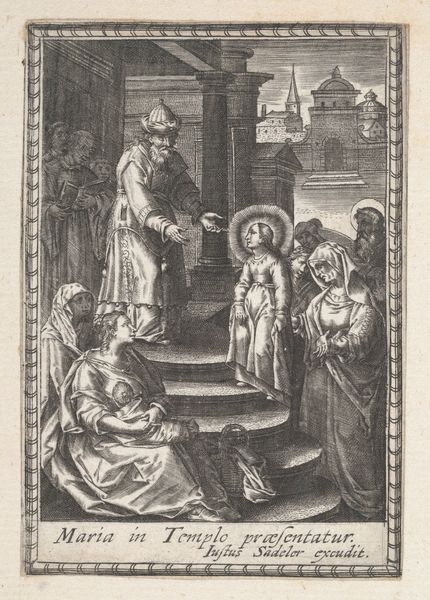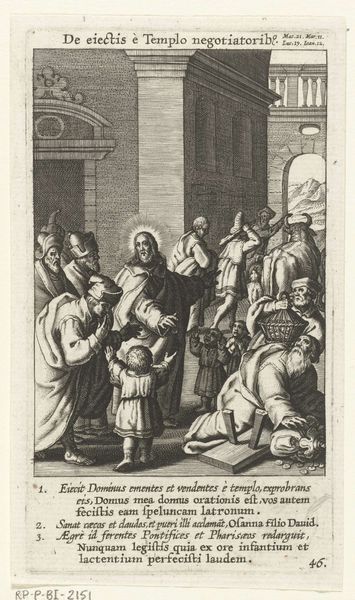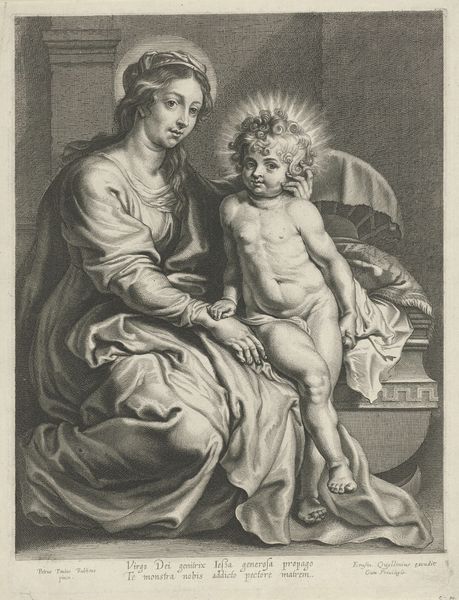
print, etching, engraving
#
portrait
#
baroque
# print
#
etching
#
old engraving style
#
highly detailed
#
history-painting
#
engraving
#
miniature
Dimensions: height 60 mm, width 35 mm
Copyright: Rijks Museum: Open Domain
Editor: This is "Thomas à Kempis Maria met het Christuskind aanbiddend" by Pieter Serwouters, made after 1626. It’s an etching, engraving and print that looks like a miniature world of devotion. What stands out is the almost austere reverence… the way Thomas kneels before Mary and the Christ Child. What do you make of this piece? Curator: It's a fascinating example of the era’s religious sensibilities filtered through the lens of portraiture. The engraving situates Thomas, likely commissioned to solidify his legacy, within a specific power dynamic. We have to ask, who does this image serve and what kind of devotion does it promote? Editor: Power dynamic, in what way? Curator: Notice how Thomas is positioned below Mary and Jesus, quite literally, he’s earthbound while they are framed by light and architectural elements, implying a heavenly connection. Also note that while the book on the lower part mentions in Latin 'In all things I have sought rest and nowhere found it except in a little corner with a little book', it appears next to 'Thomas A Kempis', which suggests humility in face of a long devotional process, not necessarily an easy or quick devotion. What do you make of that composition? Editor: That positioning certainly creates a hierarchy! I hadn't considered the power it conveys, even in apparent humility. Curator: Exactly. And the presence of Latin, alongside Dutch in the book displayed, speaks to different audiences, inviting us to consider issues of access, class, and control related to religious experience during that period. How do these different languages influence your interpretation? Editor: That’s true, the different languages add layers of interpretation – a hidden meaning for a privileged audience maybe? This makes me consider the artwork in a totally new light. Curator: Precisely, understanding those complexities help us see beyond just piety, enabling a more nuanced reading of history.
Comments
No comments
Be the first to comment and join the conversation on the ultimate creative platform.
